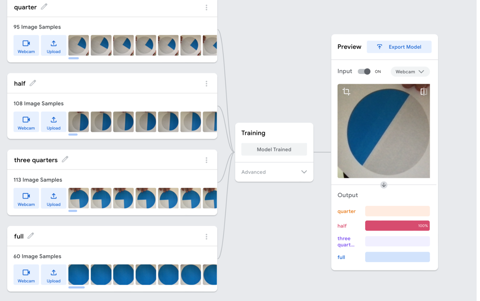Teaching an AI to recognise fractions
In this lesson plan, students represent fractions and use the Teachable Machine artificial intelligence (AI) to recognise quarter, half, three-quarters and full. This lesson was inspired by Libby Spencer, Classroom Teacher, Pilgrim School, South Australia.
Additional details
| Year band(s) | 3-4 |
|---|---|
| Content type | Lesson ideas |
| Format | Web page |
| Core and overarching concepts | Privacy and security, Digital systems, Data representation |
| Australian Curriculum Digital Technologies code(s) |
AC9TDI4P06
Use the core features of common digital tools to create, locate and communicate content, following agreed conventions
AC9TDI4K03
Recognise different types of data and explore how the same data can be represented differently depending on the purpose
AC9TDI4P07
Use the core features of common digital tools to share content, plan tasks, and collaborate, following agreed behaviours, supported by trusted adults
AC9TDI4P09
Identify what personal data is stored and shared in their online accounts and discuss any associated risks |
| Technologies & Programming Languages | Artificial Intelligence |
| Keywords | digital tools, teachable machine |
| Integrated, cross-curriculum, special needs | Mathematics |
| Organisation | ESA |
| Copyright | Creative Commons Attribution 4.0, unless otherwise indicated. |
Related resources
-

Understanding digital systems (Years 3-4)
Simple ideas for learning about digital systems in the classroom.
-
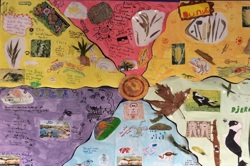
Classroom ideas F-10: Aboriginal and Torres Strait Islander connections to Digital Technologies
This resource provides examples of ways Aboriginal and Torres Strait Islander Histories and Cultures can be integrated into Digital Technologies. Examples include 'classification and sorting data' and 'designing solutions'.
-
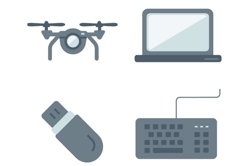
Digital systems cards
These cards can be used for activities to support building knowledge and understanding of digital systems with a focus on the components of digital systems; in particular, hardware and peripheral devices.
-

Robots, data and computational thinking (Years 2-4)
This classroom resource comprises four worksheets to accompany a lesson on data and computational thinking. These materials are designed for teachers to use simple line-following robots (Ozobots) to engage students in the computational thinking process and working with data.
-

Collecting data about litter in the community (Years 3-4)
The litter students find in the local environment can provide a good source of data. The interpretation of this data can help students answer a range of inquiry questions.
-
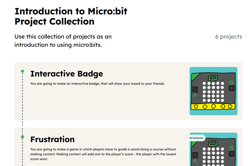
Introduction to Micro:bit Project Collection
A collection of projects that can be used as an introduction to using micro:bits.
-
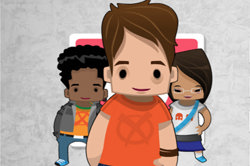
eSafety Commissioner: Video and resource library
Online safety resources for secondary schools supported by lesson plans and multimedia resources. Use the filters to find tailored resources suitable for your classroom needs.
-
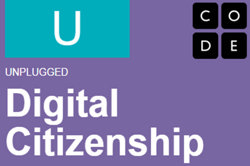
Digital Citizenship Unplugged
This site provides a structured lesson plan to teach Digital Citizenship to primary-aged students.
